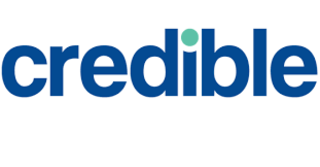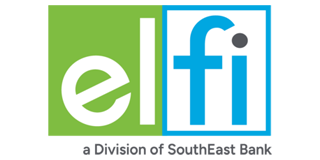Trump’s Big, Beautiful Bill Changes Student Loans and Monthly Payments. Here's How

President Donald Trump’s “big, beautiful bill” is now a great, big law.
Trump signed the nearly 1,000-page megabill into law Friday during a July 4 celebration, marking a major victory for the president’s domestic policy agenda. Among many things, the sweeping legislative package overhauls the federal student loan repayment system. It also increases military and border spending, extends hefty tax cuts implemented during Trump’s first term and cuts federal welfare programs.
Most of the student loan provisions affect new borrowers who take out loans starting in July 2026 or later. But as Adam Minsky, an attorney who specializes in student loan law, recently told Money, certain current borrowers are also impacted. In some cases, he said, they may have “substantially higher monthly payments.”
Here’s a look at what we know — and don’t know yet — about the coming changes to the federal student loan system. We will update the list of FAQs below as we learn more.
Does the ‘big, beautiful bill’ affect borrowers who are already in repayment?
Yes, some parts of the new law affect current borrowers who are enrolled in the following income-driven repayment plans: Saving on a Valuable Education (SAVE), Income-Contingent Repayment (ICR) and Pay As You Earn (PAYE).
Upward of 13 million borrowers are enrolled in such plans, with the largest share in SAVE. Borrowers in these plans will need to switch to either the remaining Income-Based Repayment (IBR) plan or one of the two newly created repayment plans by July 2028.
What is the Repayment Assistance Plan?
Trump’s sprawling new budget package creates a brand-new federal student loan repayment option called the Repayment Assistance Plan, or RAP. Essentially, this plan condenses several income-drive repayment plans into one.
- Monthly payments under RAP range from 1% to 10% of the adjusted gross income, or AGI, of the borrower, with a minimum monthly payment of $10 per month. Borrowers with higher earnings would pay a higher portion of their income (2% for earnings of $20,000; 3% for $30,000 and so on).
- AGI is calculated based on family situation, including dependents and filing status. Spouses who file separately may have AGI calculated separately.
- After on-time payments for 360 months, or 30 years, remaining balances would be canceled.
- If the monthly payment doesn’t cover the interest that accrues on the loans, that interest is waived. The program also reduces the loan’s principal by up to $50 per month if the payment wouldn’t already reduce the principal amount.
What’s the new standard payment plan?
Borrowers already on fixed payment plans (standard, graduated and extended) can stay on their current schedule.
Loans taken out July 1, 2026, or later are subject to the new standard repayment plan, which is a fixed payment option with terms that vary from 10 to 25 years, based on the original principal amount of the loan.
- For loans under $25,000, borrowers would pay a fixed monthly amount for 10 years.
- For $25,000 to $49,999 worth of loans, borrowers pay a fixed payment for 15 years.
- For $50,000 to $99,999, borrowers pay for 20 years.
- For $100,000 and up, borrowers pay for 25 years.
Are my payments going to increase? Decrease? Stay the same?
Most current borrowers are not enrolled in an income-driven repayment, or IDR, plan, so their payments won’t be directly affected by the new law (unless they choose to switch plans). However, those enrolled in SAVE, ICR and PAYE will likely see their payments change when they are required to switch plans.
Some 8 million borrowers are enrolled in SAVE alone, and their payments are currently paused due to ongoing litigation. Even without the payment pause, about half of those in SAVE had their payments set to $0 because their income fell within 225% of the federal poverty line.
Once current SAVE borrowers are ultimately transitioned onto one of the new plans, they will see higher payments overall. Borrowers in ICR and PAYE could see higher payments as well, although the new Repayment Assistance Plan (RAP) aims to keep payments affordable.
Under RAP, minimum monthly payments range from as low as $10 to more than $830 for borrowers with AGIs of $100,000 and above.
Borrowers currently enrolled in the Income-Based Repayment, or IBR, plan can keep their plan or switch to RAP if they wish.
When do the changes start?
All new loans taken out July 1, 2026, or later must be repaid with one of the two new plans: the standard repayment plan or the Repayment Assistance Plan, or RAP.
Several other provisions related to loan limits start next July as well.
Borrowers enrolled in one of the affected IDR plans will need to switch sometime between July 2026 and July 2028.
Will I be automatically switched to a new plan, or do I have to opt in?
In general, borrowers who are required to switch will be given the option to choose between the new standard repayment plan or the RAP. If no choice is made, they will default to the RAP.
I’ve been in the SAVE forbearance. What does this mean for me?
Borrowers who have had their payments paused due to the court battle over SAVE will be required to start making payments by July 2028 at the latest. That date is the deadline to switch to either the RAP or a standard repayment plan. It’s not clear if the SAVE forbearance could end before then.
Starting Aug. 1, the Education Department said that interest on loans for borrowers in SAVE will begin accruing again. The payment pause will still be in effect, but the department did not comment on how long it would last.
I’m working toward PSLF. Does this affect me?
Not really. Earlier versions of the bill included changes to Public Service Loan Forgiveness for medical or dental internships, but the law excluded those provisions. PSLF remains unchanged.
What’s happening with student loan forgiveness?
Student loan forgiveness remains in some forms. For public and nonprofit workers, there’s still PSLF.
In addition, most other borrowers can enroll in the new RAP, which will forgive remaining balances after making 360 months (about 30 years) of on-time payments.
What isn’t clear yet is the forgiveness timeline under IDR plans that are going away. Borrowers already enrolled in PAYE, for example, are supposed to have their balances wiped away after 20 years of payments. But by July 2028, borrowers in PAYE will have to switch to either the standard payment plan or RAP, which has a 30-year forgiveness timeline.
The Department of Education has not released specifics on what forgiveness timeline it will honor for current borrowers who are required to switch plans. Money has asked the department for more details and will update this story if we receive a response.
I heard the bill eliminates deferments and forbearance, is that true?
The Education Department currently offers eight different types of deferment options. Two of them, deferments for economic hardship and for unemployment, are going away after July 2027.
Deferments that will remain include relief options while undergoing cancer treatment, performing military service and other scenarios.
Forbearance options remain, as well. These temporarily stop or lower monthly payments, but interest accrues for all loan types during the forbearance period. Specifically, the student loan debt burden forbearance program may be an alternative for borrowers who would have otherwise benefited from economic-hardship or unemployment deferment.
This is a relief option if the borrower's federal loan payments exceed 20% of their monthly gross income.
I have Parent PLUS loans, what plans will be available for me?
Starting July 2026, the Education Department will implement new Parent PLUS loan limits: a $20,000 annual limit per dependent student with an aggregate cap of $65,000.
As for repayment options, only one IDR plan is currently available for Parent PLUS loans — the Income-Contingent Repayment, or ICR, plan — and that’s only if the loans are consolidated. Because ICR is sunsetting, Parent PLUS loans after 2026 won’t be eligible.
According to Minsky, current Parent PLUS borrowers who consolidate may maintain access to the remaining IBR plan if consolidation and enrollment is completed before July 2026. Otherwise, the loans would lose access to all income-driven repayment plans.
More from Money:
The Best Colleges in America Right Now
How to Choose a College Major in the Age of AI
Student Loan Delinquencies Are So Bad They're Hurting America's Average Credit Score





